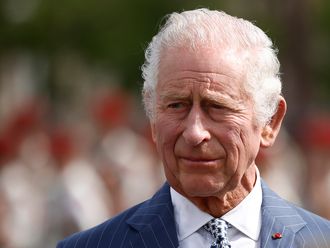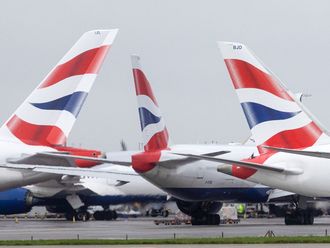Barcelona: Hundreds of thousands of Catalans were poised to rally on Monday to demand their region break away from Spain, in a show of strength three weeks ahead of an independence referendum banned by Madrid.
Nearly 400,000 people have signed up to join the demonstration in Barcelona, part of an escalating struggle between the wealthy northeastern province and Spain’s central government.
The protest coincides with Catalonia’s national day, the “Diada”, which marks the fall of Barcelona in the War of the Spanish Succession in 1714 and the region’s subsequent loss of institutions and freedoms.
It kicks off at 17:14 (1514 GMT) — a nod to the year 1714.
Since 2012 the holiday has been used by separatists to press for an independent state — but Catalonia’s pro-independence president Carles Puigdemont said this year’s “Diada” was “very important”.
“It is a day to express our will as a people, remembering the past, where we come from, but also to project ourselves into the future,” he said in a speech broadcast on Catalan TV on the eve of the march.
“A future that we have in our hands and that we will democratically decide really soon.”
Those against independence complained that a day meant for all Catalans had been hijacked by the separatists — and even more so this year ahead of the referendum planned for October 1.
“The theme of today’s protest is ‘Yes Diada’,” Ines Arrimadas, the leader in Catalonia of the anti-independence Ciudadanos party, said on Spanish television.
“Yes” refers to the answer separatists will give in the referendum when asked whether they want their region to be independent.
“That means that those of use who aren’t in favour of independence cannot participate,” Arrimadas said.
Prime Minister Mariano Rajoy, whose conservative government is fiercely against the vote, wished Catalonia “a good day”, calling “for a Diada of freedom, cohabitation and respect for all Catalans”.
Organisers have chartered about 1,800 buses to take people to Barcelona for the march.
The demonstrators will take the shape of a giant “X” by gathering on the Paseo de Gracia and Aragon avenues in central Barcelona to represent the mark Catalans will make on their ballots during the referendum.
If the “Yes” side wins the vote, Catalonia’s regional government has vowed to declare independence within 48 hours and set about building a sovereign state.
With Spain’s central government promising to block the referendum, the pro-independence camp is keen to show that it can rally its troops — especially after participation in the “Diada” declined last year.
Rajoy’s conservative government argues the vote violates the constitution, which states that only central authorities can call a referendum.
Following a legal challenge from his government, Spain’s Constitutional Court suspended a referendum law that was fast-tracked through Catalonia’s regional parliament on Wednesday.
Police have searched a Catalan printing house and a local weekly newspaper suspected of making ballots for the referendum while Spain’s state prosecutor has launched criminal proceedings against Puigdemont and other Catalan officials.
Catalan society is deeply divided over independence.
In a survey by the Catalan Centre of Opinion Studies in July, 41.1 per cent backed independence while 49.9 per cent rejected it. Some 70 per cent wanted a referendum, however, to settle the question once and for all.
Like the referendum held in Britain last year on the country’s membership in the European Union, the issue in Catalonia pits rural areas — which are more pro-independence — against large urban centres like Barcelona that are more in favour of remaining in Spain.
Catalonia, which is roughly the same size as Belgium and has its own language and customs, already has significant powers over matters such as education and health care.
But Spain’s economic problems, coupled with a perception that the wealthy northeastern region’s 7.5 million people pay more in taxes to Madrid than they get in return, have pushed the independence question to the centre stage.
During the 2013 “Diada” demonstrators formed a human chain that crossed Catalonia.
The following year the demonstration took the shape of a giant “V” for “vote” down two of the main avenues of Barcelona. In 2015 the march resembled a human arrow.











